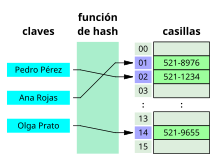SQL Aliases are used to give a table or a column a temporary name. An alias only exists for the duration of the query. In this lesson we are going to talk about the UNION clause. Unlike a join, which combines columns from different tables, a union combines rows from different tables. You can use the UNION clause to combine table rows from two different queries into one result.
SQL: grouping tables as with join, union, and. Create a new table from merging two. How do you UNION with multiple CTEs? Suppose, we have two result sets A( ) and B( ,3).
Concatenates the of two queries into a single result set. APPLIES TO: SQL Server Azure SQL Database Azure Synapse Analytics (SQL DW) Parallel Data Warehouse. You control whether the result set includes duplicate rows: UNION ALL - Includes duplicates.
As you will see the final ets will differ, but there is some interesting info on how SQL Server actually completes the process. A unioned table can be used in a join with another unioned table. If a named range is used in union , null values display under the Sheet field. I have two tables with the same columns. Introduction to SQL Server UNION.
CompanyName, EmployeeI OrderDate. To combine result set of two or more queries using the UNION operator, these are the basic rules that you must follow:. SELECT OrderI Customers. Is it possible to create a union using two custom SQL ? This rule ensures that the result set is consistent as rows are fetched by SQL.

Table − ORDERS table is as. For these next exercises we suggest creating two different tables that are identical in structure but contain unique rows of data. In SQL the UNION clause combines the of two SQL queries into a single table of all matching rows. Any duplicate records are automatically removed unless UNION ALL is used. Marks of more than of table section_a is included in above output.
SQL Dump of Section_A and Section_B tables. In the following example, the two queries have been set using two different criteria for the same table. SQL UNION a table to itself.

Here in this example, the marking rows are identical, but it has been displayed for the ALL clause along with UNION. In order to perform a UNION the columns of table must match those of table 2. So all the retrieved rows ( including duplicates ) have displayed. The following are the basic rules for SQL Server Union operator: The number of columns must be the same in all the queries. Union in SQL will select all the distinct records from all queries. It creates a new virtual table that contains the SQL union of all the columns in both source tables.
Because when UNION operator combines the sorted result sets from each query, it does not guarantee the order of rows in the final result set. We use the following tables for our example. If you want duplicates (i.e all rows from both tables) you need a UNION ALL.
SQL joins are extremely useful. It is simple one to create a new table from already existing table in SQL. As opposed to the other set expressions, the output schema of the OUTER UNION includes both the matching columns and the non-matching columns from both sides. Learn to use Union , Intersect, and Except Clauses.
For example: If two tables having same number of columns along with records means by using UNION ALL operator. They are useful when you need to combine the from separate queries into one single result. The UNION , INTERSECT, and EXCEPT clauses are used to combine or exclude like rows from two or more tables.
Nincsenek megjegyzések:
Megjegyzés küldése
Megjegyzés: Megjegyzéseket csak a blog tagjai írhatnak a blogba.